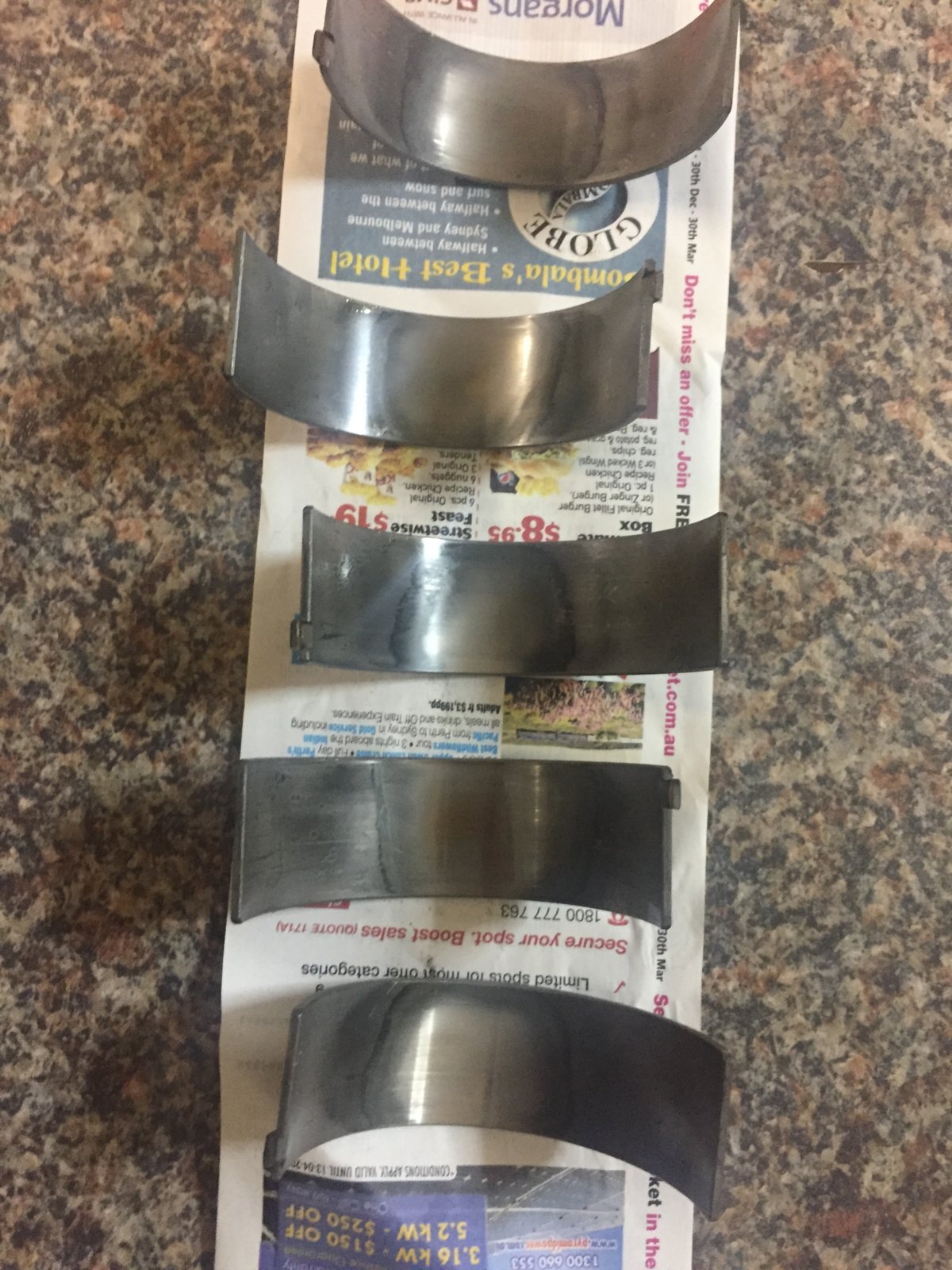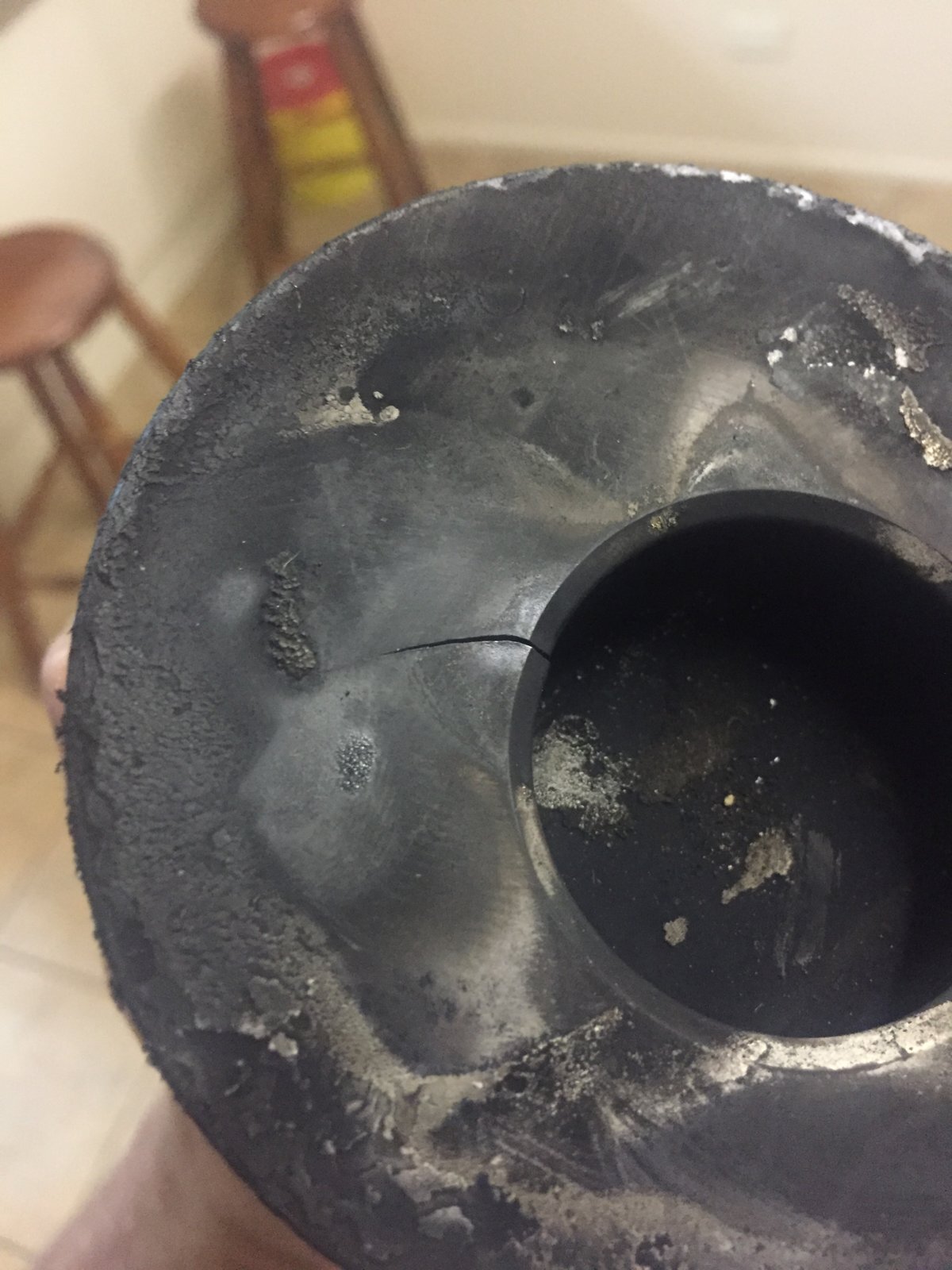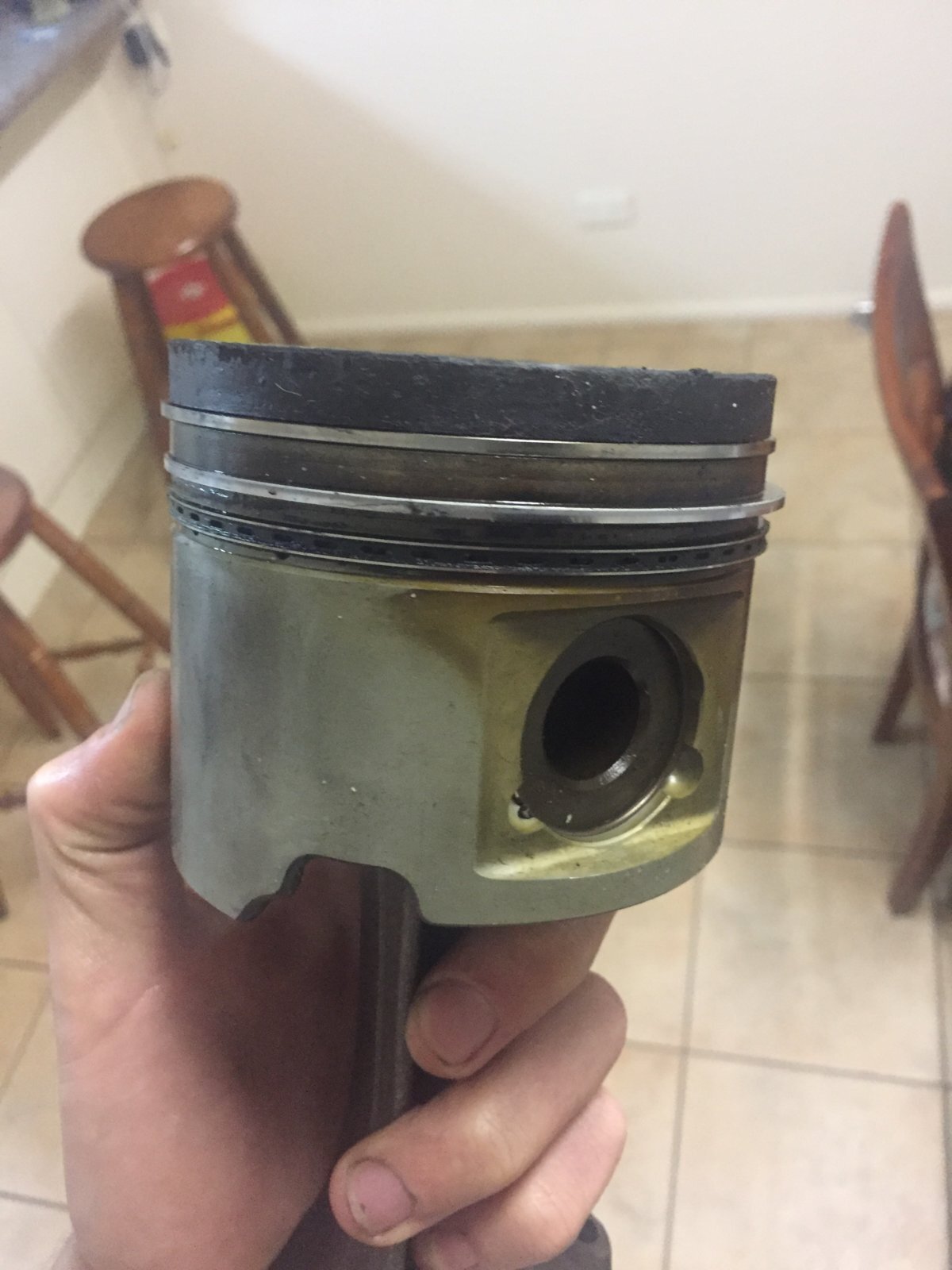Pistons and other relevant parts shoudl be available through Aussi shop TERRAIN TAMER are a very reasonable price.
If You replace a single piston, it is vital that the replacement parts weight the same. Thats the very short version...
If You pull a piston, a MUCH better way to test/inspect the liner is to use penetrating crack dye test. It comes as a set with 2 spray cans.
As for cleaning the bore; At this stage You may just as well pull all pistons & replace the piston rings. In order for this to have its best value, You can easily hone the liner(s) Yourself with abit of ease. I have done this so many times on different engines, I have stopped counting.
As for measurung the clearence on bearings etc, look for a descent set of plastigauge....












